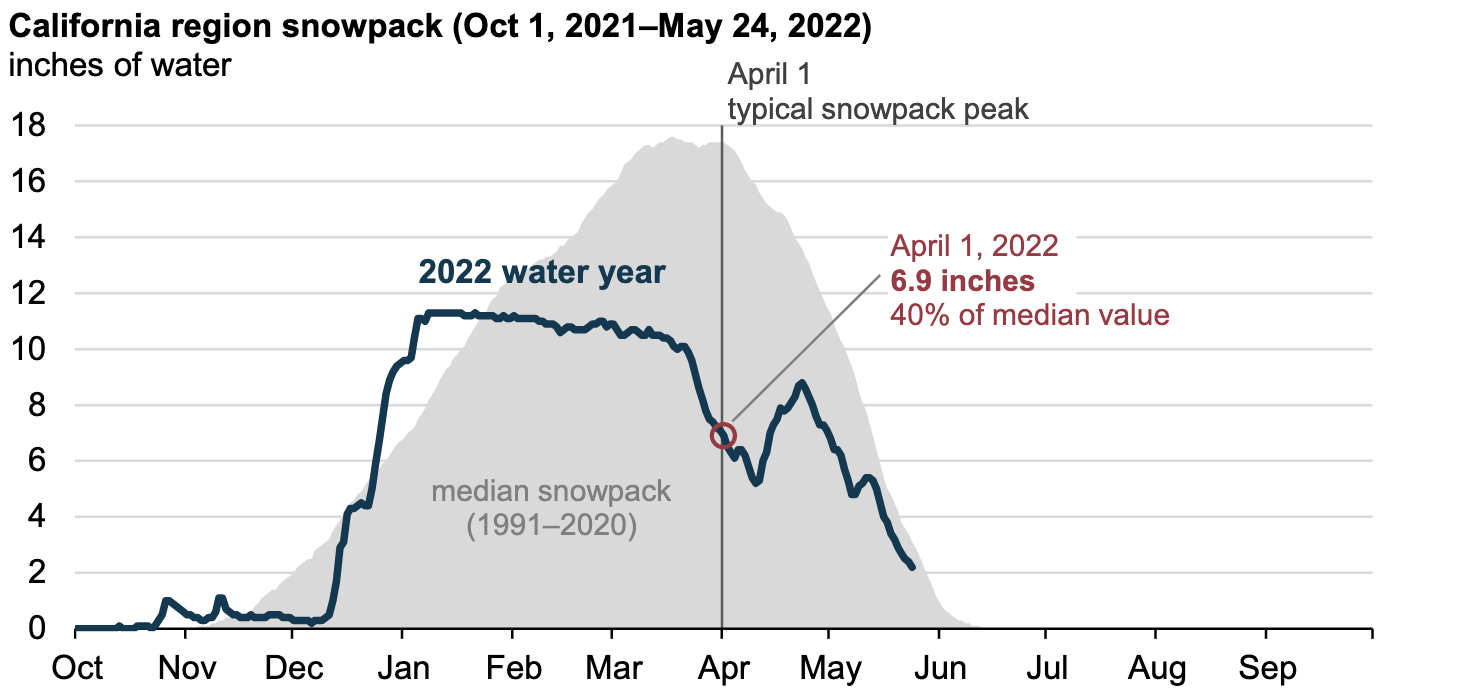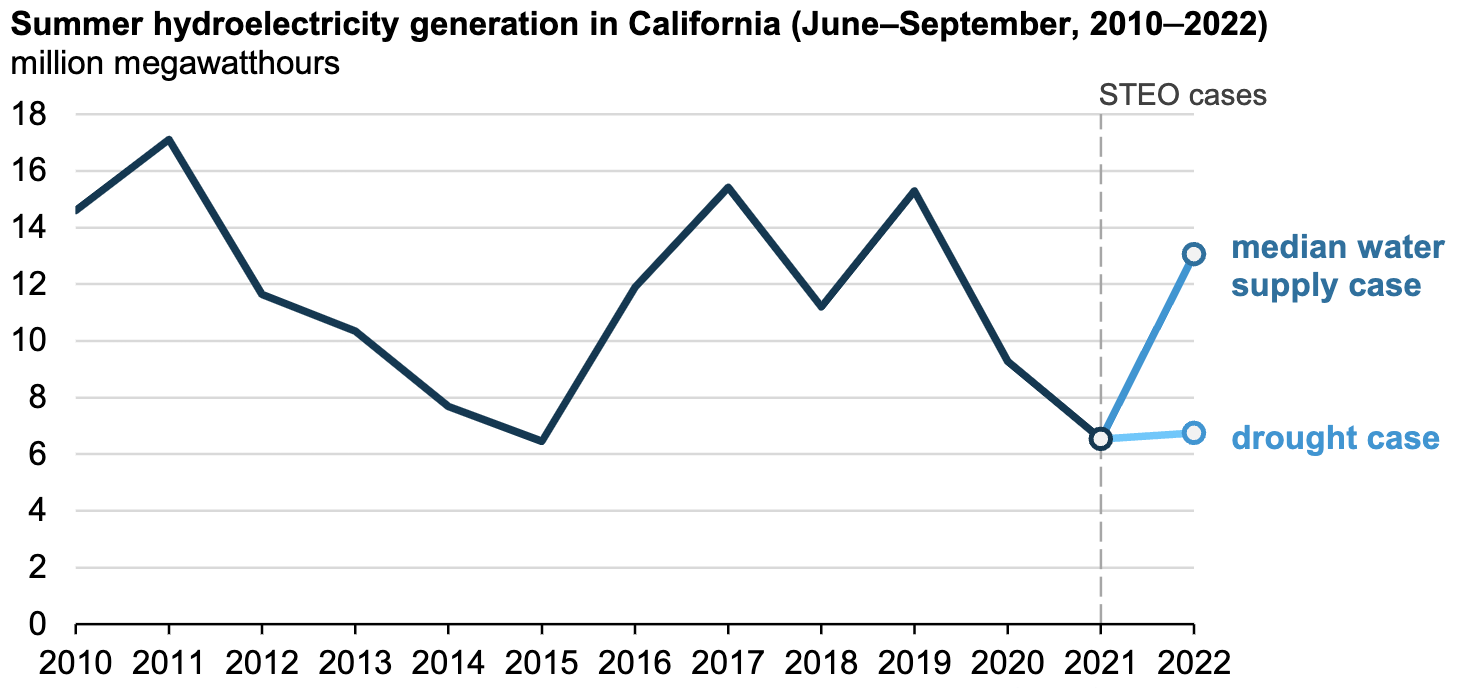California is a good example of what high renewable generation levels can do to reliability and electricity prices if the weather does not comply. The state wants to be dependent on renewables for 50 percent of its electricity by 2025 and 100 percent by 2045. In 2020, the state was 33 percent dependent on non-hydroelectric renewable energy, mostly wind and solar power, getting most of the rest of its in-state generation from natural gas, hydroelectricity, and nuclear power. The state also imports about 30 percent of its electricity demand from neighboring states.
But, California has been suffering from drought conditions. January, February, and March had the least rain and snow on record for any of these months in California. These three dry months overshadowed gains in precipitation at the end of 2021 when snowpack was above normal levels in December. Snow melted faster than expected, reducing snowpack to just 38 percent of average by April 1, which resulted in the state’s second extreme drought in 10 years.
The Energy Information Administration (EIA) evaluated a scenario where California’s hydroelectric levels would be 48 percent less this summer than under normal conditions. The agency found that with reduced hydroelectric generation, wholesale electricity prices in western U.S. electricity markets would be 5 percent higher and energy-related carbon dioxide emissions in California would be 6 percent higher than when normal water supply conditions are assumed.

EIA Scenario
As of April 1, which typically marks the peak of snowpack, California’s snowpack had an equivalent water content of 6.9 inches, which is about 40 percent below the median value from 1991 through 2020. With less snowpack, as temperatures warm in the spring, less snow melts and flows into California’s reservoirs. Using reservoir storage data and inflow data from California state sources, EIA developed hydroelectric generation forecasts for six major California hydropower plants: Trinity, Shasta, Edward C. Hyatt, Colgate, Folsom, and New Melones. The six plants together accounted for 22 percent of California’s hydroelectric generation in the previous five years (2017–21). Using the modeled generation from these plants, the agency estimated California’s overall hydroelectric generation under the two cases.

EIA expects California’s hydroelectric share of the generation mix for June through September 2022 in the drought scenario to be 8 percent of California’s total electricity generation, compared with 15 percent under normal water conditions. In drought conditions, California would have to import more electricity from other markets and use more in-state natural gas-fired generation. The result is the 5 percent increase in wholesale electricity prices and the higher energy-related carbon dioxide emissions mentioned above.
Conclusion
Being dependent on water levels in dams, the sun shining, or the wind blowing means that when these sources are not available, shortages in power generation can result. In that case, other types of generation must be used, which can escalate prices or result in brownouts or blackouts. When California found itself short of energy in the summer of 2020, it wanted to import from its neighboring states. Unfortunately, the heat wave causing California’s power surge also hit its neighboring states, resulting in no excess power from them. California had to employ rolling blackouts. And, it may need to do so again this summer if the drought persists.



